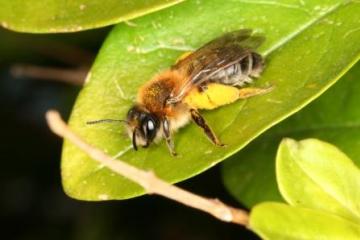Species Account for Andrena tibialis
Andrena tibialis (Kirby, 1802)
a mining bee
Aculeata: Andreninae

Reproduction for study and non-profit use permitted, all other rights reserved.
Taxonomic group: bees and wasps (Aculeata) - County data
View time series maps for Andrena tibialis
member log-on for taxon report
Status: Na
Essex RDB: Listed
Threat: Regionally Important
Images
upload a new image
Species text
The mining bee Andrena tibialis is widespread but very local in most areas. A revision of its conservation status from RDB3 (Shirt 1987) has been necessary because this species has proved to be more widespread in the midlands and northern England than was previously suspected. In the south however, it appears to have declined substantially in many districts, probably in response to the loss and deterioration of suitable habitat. Post-1970 records are known for about 25 sites (Falk, 1991b). It is found in a variety of open habitats including heathland, road verges, quarries and also gardens and other suburban situations, usually on sandy or gravelly soils. Nest burrows are dug singly or in small aggregations in sparsely-vegetated areas. Adults are found from mid-March to late May, occasionally into early June, and obtain pollen from a variety of flowers including Ranunculus, Acer, Prunus and Salix. References
Habitats
Recorded management for locations with Andrena tibialis
Recorded substrate and hydrology for locations with Andrena tibialis
Why not join the Club, register and add a new species page
Interpretation of distribution maps



















